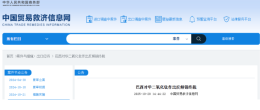Understanding the Role and Selection of Polypropylene (PP) Stiffening Agents
PP stiffening agents are a type of additive that is added to polypropylene to enhance its rigidity (often expressed as flexural modulus), hardness, and heat deflection temperature (HDT).

I. The Principle of Action of Toughening Agents
The core mechanism of action of the strengthening agent isChange the crystallization behavior of PP.PP is a type of semicrystalline plastic, and its properties largely depend on crystallinity, crystal form (α, β, γ crystal forms), and crystal size.
Heterogeneous nucleationMost reinforcing agents are used asNucleating agentThey provide a large number of nucleation points during the cooling crystallization of PP melt, allowing the PP crystals to grow more uniformly and densely.
Improve crystallinityMore nucleation sites mean a faster crystallization rate, and the overall crystallinity of the final material will increase.
Refined spherulitePP natural cooling forms larger spherulites, and the boundaries of spherulites are weak points of the material. The addition of a stiffening agent reduces the size of spherulites and makes the structure denser, thereby reducing the weak points.
The effect brought isA denser and more complete crystal structure can more effectively resist external forces, thereby enhancing the material's rigidity, hardness, and heat resistance.
II. Common Types of PP Reinforcing Agents
The reinforcing agents are mainly divided into two categories:Organic nucleating agent Inorganic filler。
1. Organic Nucleating Agent (High Efficiency, Transparent)
These additives can significantly enhance the rigidity of PP with very low addition levels (0.1% to 0.3%) and have minimal impact on transparency, and may even improve transparency (i.e., transparent nucleating agents).
1. Glycerol derivatives
The earliest commercialized and most widely used transparent nucleating agent.
The effects of increasing rigidity, improving HDT, and enhancing transparency and surface gloss are very significant.
Under certain conditions, it may precipitate, causing the surface of the product to become sticky or produce an odor.
Representative productsMillad 3988 (Milliken) is an industry benchmark.
Organophosphates
The effects of adding and enhancing HDT are excellent, especially skilled at increasing the heat distortion temperature.
Good thermal stability, not easy to precipitate.
Limited improvement in transparency, and it may even lead to a decrease in transparency.
Representative ProductsNA-11, NA-21 (Edico) etc.
3. Carboxylate salts
It is a general-purpose nucleating agent with relatively low cost.
Cheap price, can effectively improve rigidity and HDT.
It does not help with transparency and may affect the color of the product.
Representative Representative
Polymeric Nucleating Agent
Through its ultra-high molecular chains, physical crosslinking points are formed in the PP matrix to induce crystallization.
Certain specific structures of polyamide (PA), polyester, etc.
Inorganic fillers (high rigidity, low cost)
By means of physical filling, a large amount (usually 10%~40%) is added to significantly enhance rigidity, but it will sacrifice some other properties.
Talcum powder
It is the most commonly used and effective inorganic reinforcing filler for PP.
The reinforcement effect is very prominent, significantly improving HDT and dimensional stability, while being cost-effective.
This leads to an increase in material density, a decrease in impact toughness (especially low-temperature toughness), a deterioration in the surface gloss of the products, and wear on processing equipment.
Widely used in automotive components (such as door panels, dashboards), appliance housings, etc.
Calcium carbonate
A cheap filler.
Cost is extremely low, and while increasing rigidity, the negative impact on impact toughness is usually less than that of talc powder.
The effect of strengthening and enhancing HDT is not as good as talc.
Commonly used for mid-to-low-end products with low performance requirements, or as a means to reduce costs.
Barium sulfate
High-density filler.
Can improve rigidity and surface gloss, and cause little wear on equipment.
High density leads to a significant increase in the weight of the product.
Commonly used for products that require high surface gloss and certain rigidity.
3. How to Choose a Reinforcing Agent?
The choice of reinforcing agent depends on your final product and performance requirements.

IV. Precautions for Using Toughening Agents
Diversity is key.Uniform dispersion of nucleating agents or inorganic fillers in the PP matrix is crucial. Poor dispersion can lead to substandard performance or even defects. A high-speed mixer should be used, and if necessary, coupling agents (such as titanate or silane coupling agents) should be used to treat the filler surface.
2. Performance BalanceIncreased rigidity is usually accompanied byDecrease in impact toughness (especially low-temperature toughness)In applications requiring high toughness, it is necessary to simultaneously addToughening agentBalance performance with materials such as POE and EPDM.
3. Impact on Processing:
Adding nucleating agents can accelerate the crystallization rate and potentially shorten the molding cycle.
Adding a high proportion of inorganic fillers will increase the melt viscosity, raise processing energy consumption, and cause wear on the screw and barrel.
4. Cost AccountingIt is necessary to comprehensively consider the cost of the additives themselves, the amount added, and their overall impact on the performance of the final product and processing efficiency.
V. Conclusion
Micro-efficient, improves transparency.SelectOrganic Nucleating Agent。
Significant stiffness increase, heat resistance, low costSelectTalcum powderAnd inorganic fillers.
Performance balanceUsually neededMultiple additive compounding usage(Talc powder + POE) to achieve the ideal balance of rigidity and toughness.
【Copyright and Disclaimer】The above information is collected and organized by PlastMatch. The copyright belongs to the original author. This article is reprinted for the purpose of providing more information, and it does not imply that PlastMatch endorses the views expressed in the article or guarantees its accuracy. If there are any errors in the source attribution or if your legitimate rights have been infringed, please contact us, and we will promptly correct or remove the content. If other media, websites, or individuals use the aforementioned content, they must clearly indicate the original source and origin of the work and assume legal responsibility on their own.
Most Popular
-

Brazil Imposes Five-Year Anti-Dumping Duty of Up to $1,267.74 Per Ton on Titanium Dioxide From China
-

Mexico officially imposes tariffs on 1,400 chinese products, with rates up to 50%
-

MOFCOM Spokesperson Answers Questions from Reporters on China-U.S. Kuala Lumpur Trade Consultations Joint Arrangement
-

China-U.S. Summit in Busan Tomorrow! Syensqo Launches New PAEK Material; Ascend Debuts at Medical Summit
-

"Golden October" Weak, Polyethylene Prices Hit New Low of the Year in October






